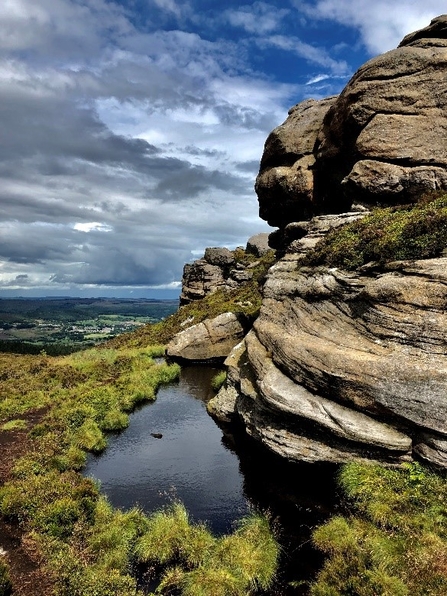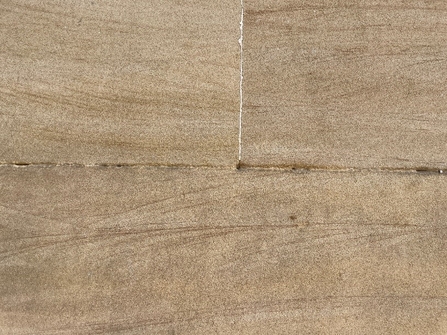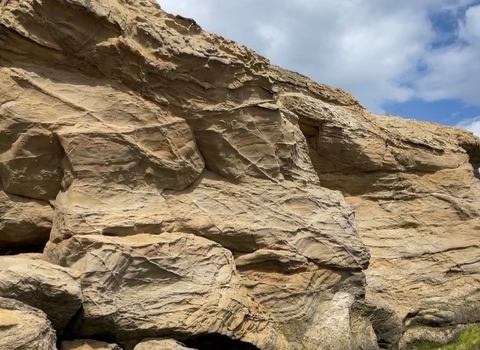What is sandstone?
It’s a rock composed of sand-sized grains. Mostly of minerals like quartz but there are often rock fragments and pieces of shells too.
How do I recognize it?
As its name suggests it looks like sand cemented together. If you look through a hand-lens you can see the sand grains. It’s most common colour is pale brown but you will see grey, red and purple sandstones too. Looked at from a distance the most noticeable thing are the regular layers of the grains – called bedding.
Where do I find it?
Sandstone is the most common rock you will see in Northumberland. You can find it almost everywhere. Simonside is a great place to see it – the rock there is called the Fell Sandstone - and on the coast, for example at Tynemouth Castle. You can also see it used as building stone everywhere, from Hadrian’s Wall to Grey Street in Newcastle.

How was it made?
Most often it was formed from sand carried down ancient rivers and deposited on beaches over 300 million years ago in Carboniferous times. But at Tynemouth there are younger sandstones formed in a hot desert.
What does a sandstone landscape look like?
Many sandstones are hard and stand proud in the landscape, forming ridges and escarpments, like those around Rothbury, or cliffs like those at Newbiggin.
Which plants like sandstone?
Sandstone usually produces a well-drained, acid habitat, one that is liked by plants like heathers and heaths.

What use is it?
Without it our county would look very different! The majority of our buildings and walls are made of sandstone. It’s a rock that splits easily into rectangular blocks and can be easily dressed and carved. Take a look at Grey’s Monument or Alnwick Castle. Old sandstone quarries are everywhere, from Haltwhistle to Berwick-upon-Tweed and from Kielder to Kenton.

